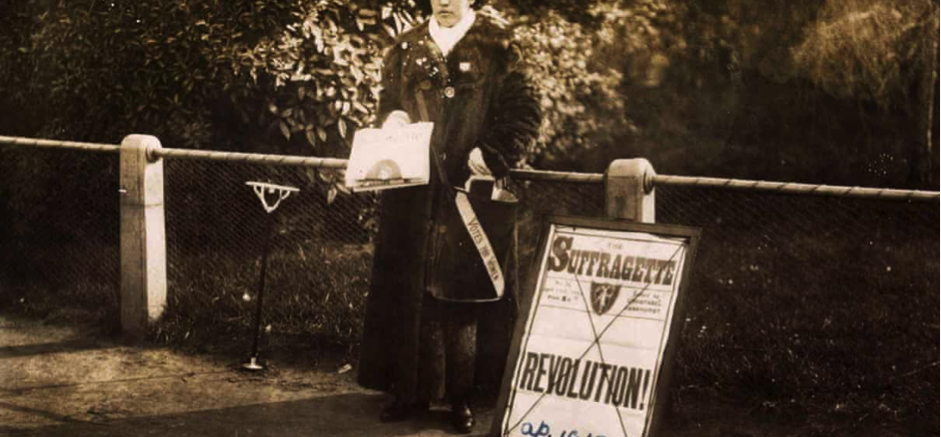Princess Sophia Duleep Singh’s life is extraordinary and full of what seem like contradictions. As Anita Anand, her biographer, says:
She was the vacuous socialite who developed an all-consuming social conscience. A royal pauper, who appeared on every aristocratic guest list, yet lived on state handouts. An obedient goddaughter to Queen Victoria, she revelled in giving the establishment a good kick-in. Most intriguingly of all Sophia fought for British women – for their democracy and the right to vote – even though Britain had taken everything from her family.
The Fall Of The Sikh Empire and a Bitter Father
Princess Sophia Jindan Alexandrovna Duleep Singh was born on 8 August 1876. She was the third daughter of the last Maharaja of the Sikh Empire, Duleep Singh, and his wife, Bamba Muller. Duleep had been forced to abdicate his kingdom, hand over the Koh-i-Noor, and was exiled to England all before he turned 16. In England, Queen Victoria treated him kindly and gave him a pension, persuading him to convert to Christianity. Maharani Jindan Kaur, his mother and one of the namesakes for Sophia, was a formidable woman. In her last two years, she planted the seeds that later led her son to reconvert to Sikhism and support the Indian independence movement.
Duleep had begun to question the legality of his abdication, growing increasingly resentful of what he realized was an underhanded deal. Bitter, he sought to uproot his family to Punjab, where he believed their presence would spark a rebellion. That was not to be the case, as the young family was detained at Aden, and promptly transported back to England.
Sophia’s father died a few years later, penniless and alone, having spent his remaining years trying to reclaim his birthright. Sophia would hold all the traits of her grandmother.
The Turning Point
After both her parents died, Queen Victoria rescued her favourite goddaughter and encouraged her to become a socialite, a role that Sophia excelled at. She attended every major social event, wore the latest French designs, became a tabloid celebrity and bred Pomeranians for competitions. Yet, the turning point in Sophia’s life was just about to come.
The British government had banned her father from entering India, and Sophia and her sisters were desperate to attend the Delhi Durbar of 1903. They decided to slip out of the country. In all her years in England, she had never faced racism because of her title and celebrity status. But in India, she was one in a sea of brown second-class citizens.
For the first time in her life, Sophia understood the harshness of colonial rule. She encountered freedom fighters such as Lala Lajpat Rai whom she admired deeply. She later turned against the British when they imprisoned Lala Rajpat Rao on charges of sedition. Nationalist cries for freedom woke Sophia up, and she returned to India to visit her family later again. She continued to learn what her family had lost to the British. She also understood how Queen Victoria and the very people she considered her friends had played a massive role in her family’s dispossession.
Sister Suffragette and Tax Resister
After arriving back in England, Sophia joined the Women’s Social and Political Union in 1909. She became a leading member for the movement for women’s voting rights, often providing funding for the group and raising money through her social connections. Sophia found her title to be useful as she stood outside Hampton Court Palace, her residence, and sold suffragette newspapers.
She also led the infamous Black Friday march in 1910, which resulted in unprecedented police brutality. Sophia broke through the cordon to charge at an officer for assaulting a suffragette. She caught him and demanded his badge number because she wanted to formally complain about him. Her actions compelled Churchill to order officers to drop the investigation against suffragettes as she was involved.
In 1911, Sophia joined a suffragette protest outside 10 Downing Street. When she spotted Prime Minister Asquith leaving the residence, she threw herself onto the car. She slammed a ‘Votes for Women’ pamphlet against his window, shouting suffragette slogans. Even though Asquith was furious with Sophia, he knew he would not be able to arrest Queen Victoria’s goddaughter.
Sophia also joined the Women’s Tax Resistance League. They arrested her twice owing to it. In court when they accused her of not paying taxes, Sophia responded, Taxation without representation is a tyranny… I am unable to pay money to the state, as I am not allowed to exercise any control over its expenditure.
The court declined to send her to jail but did fine her. When she refused to pay the fine, bailiffs went to her house and seized a diamond ring she owned. As the police tried to auction it, other suffragettes repurchased the ring for her. They returned it to her publicly, and embarrassed the police and the government. King George, exasperated with her public activism, asked, “Have we no hold on her?”
Princess Sophia’s Last Years
She made enemies of the most powerful men in the British Empire, including H. H. Asquith, King George V and Winston Churchill. She continued to advocate for women’s rights even after British women won the right to vote in 1928. In her later years when she was asked to write an entry for Who’s Who, Sophia wrote one line under her ‘interests’: “The advancement of women”.
She died in her sleep on 22 August in 1948, at the age of 72. Before her death, she expressed that she wished to be cremated according to Sikh traditions and her ashes spread in India. She left money in her will to three girls’ schools – one Muslim, one Hindu and one Sikh.
Queen Victoria’s goddaughter. A princess of a fallen empire. A vacuous socialite. A suffragette who worked with Emmeline Pankhurst. An ardent supporter of India’s independence movement. A woman who vexed the British royals with her public activism.
About The Author

Swagata is currently studying law and global politics and is a keen student of history. She has been an active campaigner for awareness about sexual assault keeping institutions accountable.
Some other blog posts you might like:
Image Source: Alamy via The Guardian
Editor: Anushka Bhatia
